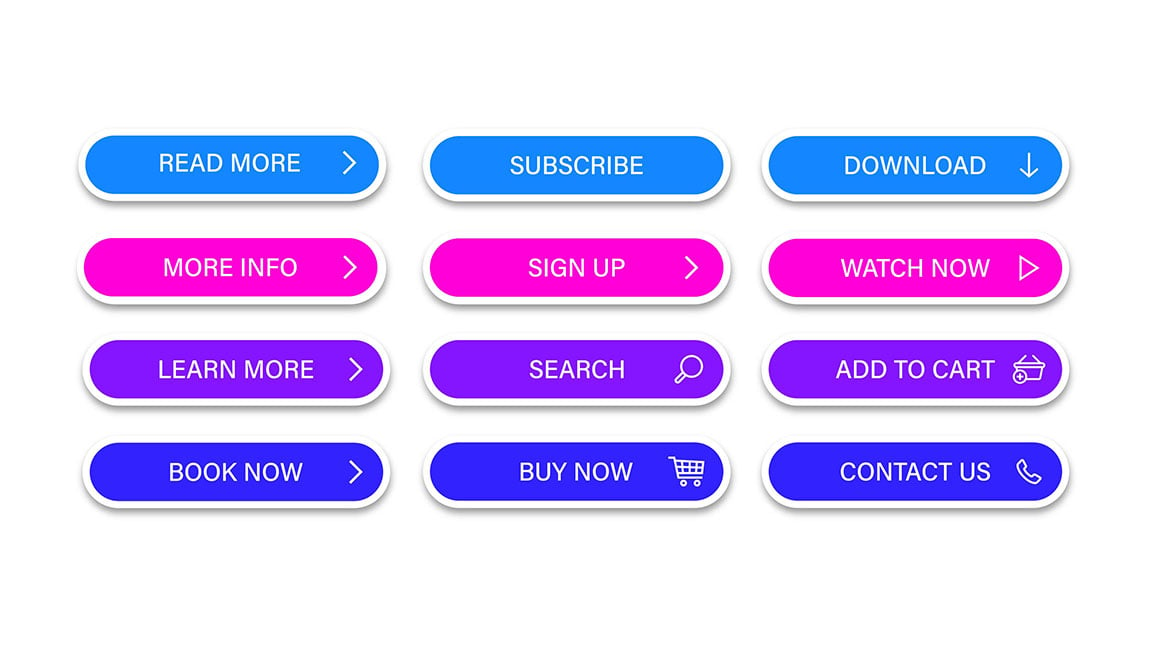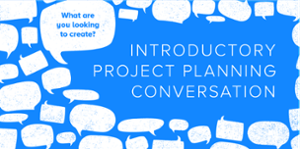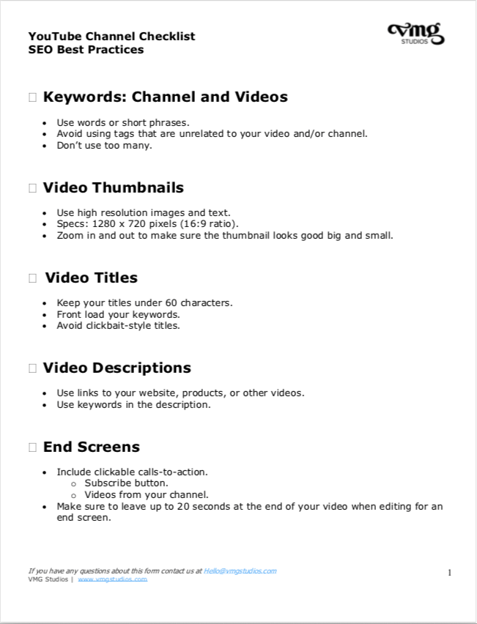
“It was a pleasure to burn.”
“It was a bright cold day in April, and the clocks were striking thirteen.”
“This is my favorite book in all the world, though I have never read it.”
When it comes to storytelling, many people will argue that the hook is the most important part. These hooks, from the famous novels Fahrenheit 451, 1984, and The Princess Bride, respectively, are captivating. They make the reader want to go on.
However, there’s something to say about a strong finish, as well.
“It’s funny. Don’t ever tell anybody anything. If you do, you start missing everybody.” -The Catcher in the Rye
The same logic can be applied to marketing.
Yes, you want to capture your audience’s attention immediately (especially in this digital age where the amount of content is endless), but you also want your audience to walk away with something whether it’s a specific feeling about your brand, a lesson learned, or a product/service loaded into their online shopping cart.
A call-to-action (CTA) is a great way to direct your audience towards a conversion.
As a creative marketing agency, VMG Studios views the CTA as a big part of any project we tackle, and we have helped enterprise-level clients convert their target audience through creative content such as product videos, animations, banners ads, and more.
In this article, we’re going to outline what a CTA is, why they are important, and how to effectively use them throughout your marketing materials.
What is a Call-to-Action (CTA)?
A call-to-action is a specific and targeted message directing your audience – whether it’s a viewer, reader, or listener – to do something, to take some kind of desired action.
Strategically placed CTAs are used to help drive conversions and sales on marketing materials such as commercials, website pages, articles, email campaigns, podcasts, and more.
So, what’s the ultimate goal of a CTA?
To capture your target audience’s contact information to eventually convert them into a paying customer.
You can do so through follow-up email campaigns and use the opportunity to set-up an introductory call or meet-and-greet session to determine how your product/services can best support their business needs.
Why CTAs Are Important
If you’re able to snag the attention of your target audience with a video or article, for example, then the goal should be to keep them engaged long enough to convert them into paying customers.
Once a person consumes your content – what should they do next?
Instead of letting them aimlessly navigate throughout your website (which still could lead to a conversion), why not show them the exact next steps to take.
This could be scheduling a consultation call with a sales representative or taking a quiz to see if they meet specific criteria or downloading an educational eBook to learn more about a specific product or service your company provides.
CTAs are designed to guide people through the sales funnel while also giving them the confidence to buy through educational content that addresses common purchasing fears.
Types of CTAs
The beauty of CTAs is the diversity in which they can be utilized. They can target people at different stages of the sales funnel – awareness, consideration, and decision – and they can target people looking for a specific product or service your business offers.
Here at VMG Studios, we categorize our CTAs in two ways:
- Direct
- Educational
There are benefits to both types of CTAs and they can be mixed and matched to efficiently target people based on buyer intent.
Examples of Direct CTAs
Direct CTAs invite a viewer to get in touch or make an immediate purchase. This type of CTA is likely what you think of in regard to traditional marketing.
“Call today for a quote!”
“Buy now and get 15% off!”
“Register for your spot today!”
“Connect with a sales representative to get started!”
These generic CTA offers work well for general marketing campaigns targeting more than one buyer persona. It isn’t necessarily promoting a specific service or product and can be used widely across marketing materials.
While it doesn’t necessarily target a specific buyer persona, this kind of CTA is aligning with a specific phase of the buyer’s journey: decision. With such a direct call-to-action, someone who is intrigued by the messaging is ready to buy or at least start a dialogue with a sales representative.
Here at VMG Studios, we’ve implemented a content marketing strategy in which we write educational articles and videos surrounding our expertise as a creative marketing agency and video production studio.
Some of the articles we write about are top of the funnel, meaning we are simply trying to increase our brand awareness by displaying our knowledge on a specific topic.
Others are bottom of the funnel – cost articles, for example – where we can assume the reader is closer to making a purchasing decision. With those articles, we like to use our introductory planning conversation CTA to drive people to schedule a meet-and-greet with our sales rep to see how VMG could support their creative needs.
This is our version of “connect with a sales representative to get started!” While this kind of CTA doesn’t guarantee a sale, in our experience, we are more likely to make a sale if we can have direct, face-to-face (over video conferencing) contact.
Examples of Educational CTAs
Idealistically, marketers want every person to become a paying customer, but sometimes, it’s not as easy as sending a “buy now” email offer.
Some people need to do more research, compare products, and generally take more time to make a purchase. Does this mean we ignore this kind of consumer? Of course not.
This is where educational CTAs really come in handy.
Instead of asking the audience to make an immediate decision, such as a purchase, you can guide them through the sales funnel from awareness to consideration to decision through educational materials.
One of the many benefits of educational CTAs is that you’re still capturing your target audience’s information even if they aren’t ready to buy yet. This allows you to still follow-up with them with either a more direct call-to-action or by providing additional educational resources based on what they downloaded in that initial conversion.
So, what do these educational CTAs look like?
They can be as simple as a worksheet or as in-depth as a highly-produced eBook. Some of our favorite types of educational CTAs include:
- Worksheets
- Outlines/templates
- Checklists
- eBooks
- Infographics
- Pricing guides
- Webinars
- Podcasts
One of VMG’s top performing educational CTA is the Top Creative Trends of 2021 eBook.
This eBook allows potential customers to learn about what’s big in live-action video, animation & motion graphics, design, and social media for 2021. It also demonstrates VMG’s expertise on the topics and shows off our graphic design skills since we put together all assets of this eBook. The goal is, even if someone doesn’t have an immediate project need, they’ll remember this eBook and come to us in the future.
As earlier mentioned, not all educational CTAs need to be highly-produced. Sometimes a simple checklist will suffice. Here’s a preview of our YouTube checklist for businesses to grow their following on the platform:
By providing value to your readers or viewers, you’re building brand recognition and that can lead to brand loyalty and trust when they are ready to buy.
Other Types of CTAs
While we like to categorize our CTAs into the 2 main buckets – direct and educational – there are more types of CTAs to consider.
Some of them you might not even realize could be classified as a CTA, such as:
- Follow us on social media
- Subscribe to our newsletter
Both of these examples are company culture/brand focused which helps build recognition and could lead to someone eventually converting (by the way, you should follow VMG on social and subscribe to our monthly newsletter 😉).
Some other, more subtle CTAs include social sharing links asking others to promote your content on their personal pages or a simple “contact us” form on a website page.
Effectively Using Call-to-Actions
Coming up with the perfect marketing strategy – whether it’s a local TV commercial, social media campaign, or dynamic digital banner ad – might feel like the most important task for a marketing team.
While the marketing materials are, of course, essential, you could argue that CTAs are just as important in converting potential customers.
Instead of letting a viewer, reader, or listener figure out what to do next once they’ve consumed your messaging, show them the next steps precisely. Guide them through the sales funnel.
There are two main categories of CTAs to consider:
- Direct: invite the viewer to get in touch or make an immediate purchase.
- Educational: informational download to establish thought leadership and brand recognition.
It’s also important to sprinkle in other kinds of CTAs to promote your brand such as “follow us on social media icons.”
CTAs are versatile; they can target specific groups, promote certain products, and you can personalize the messaging to further guide someone towards making a purchase. Driving conversions is the ultimate goal of any marketer and CTAs can help pave the path to success.









